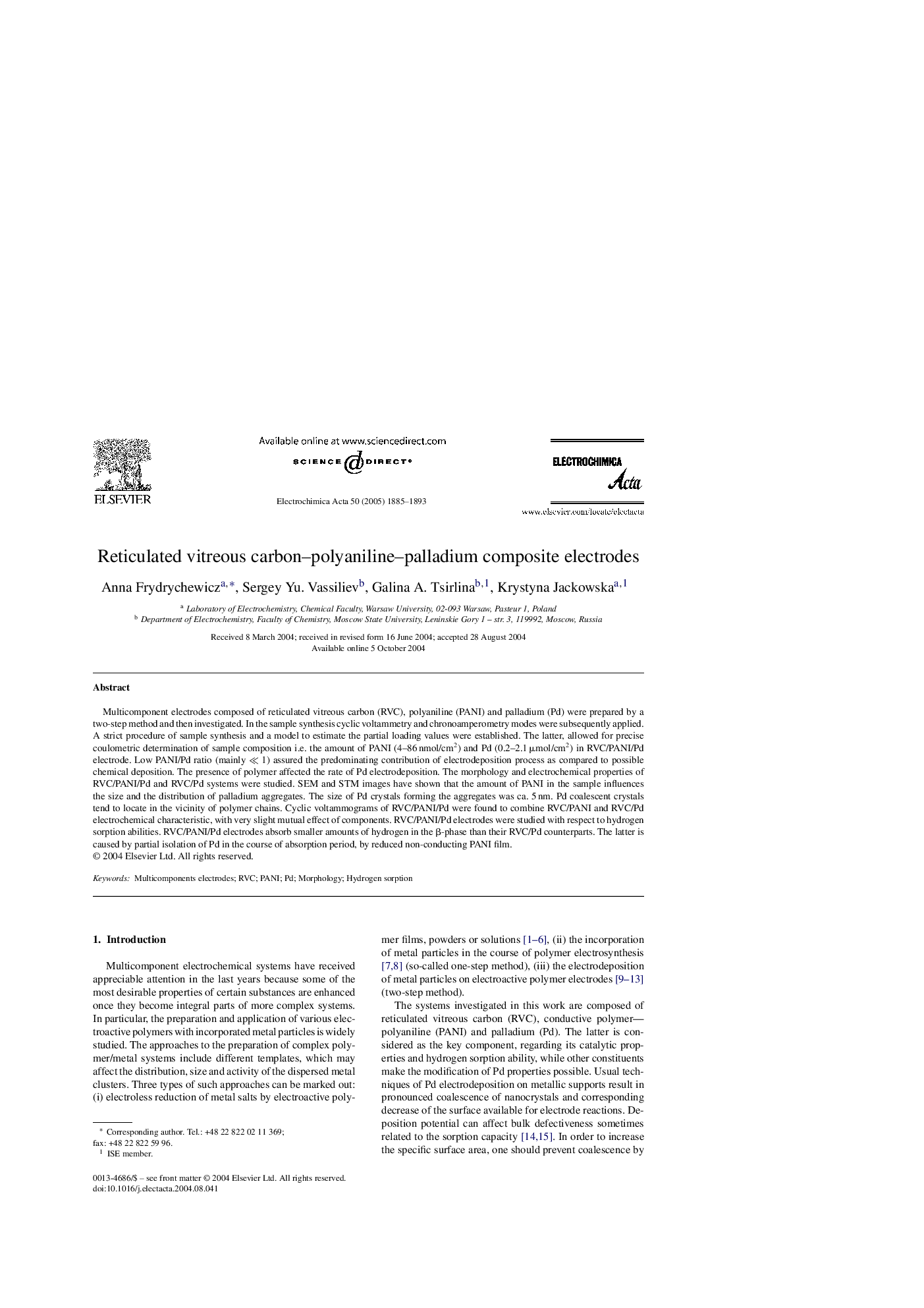| Article ID | Journal | Published Year | Pages | File Type |
|---|---|---|---|---|
| 10269546 | Electrochimica Acta | 2005 | 9 Pages |
Abstract
Multicomponent electrodes composed of reticulated vitreous carbon (RVC), polyaniline (PANI) and palladium (Pd) were prepared by a two-step method and then investigated. In the sample synthesis cyclic voltammetry and chronoamperometry modes were subsequently applied. A strict procedure of sample synthesis and a model to estimate the partial loading values were established. The latter, allowed for precise coulometric determination of sample composition i.e. the amount of PANI (4-86 nmol/cm2) and Pd (0.2-2.1 μmol/cm2) in RVC/PANI/Pd electrode. Low PANI/Pd ratio (mainly ⪠1) assured the predominating contribution of electrodeposition process as compared to possible chemical deposition. The presence of polymer affected the rate of Pd electrodeposition. The morphology and electrochemical properties of RVC/PANI/Pd and RVC/Pd systems were studied. SEM and STM images have shown that the amount of PANI in the sample influences the size and the distribution of palladium aggregates. The size of Pd crystals forming the aggregates was ca. 5 nm. Pd coalescent crystals tend to locate in the vicinity of polymer chains. Cyclic voltammograms of RVC/PANI/Pd were found to combine RVC/PANI and RVC/Pd electrochemical characteristic, with very slight mutual effect of components. RVC/PANI/Pd electrodes were studied with respect to hydrogen sorption abilities. RVC/PANI/Pd electrodes absorb smaller amounts of hydrogen in the β-phase than their RVC/Pd counterparts. The latter is caused by partial isolation of Pd in the course of absorption period, by reduced non-conducting PANI film.
Keywords
Related Topics
Physical Sciences and Engineering
Chemical Engineering
Chemical Engineering (General)
Authors
Anna Frydrychewicz, Sergey Yu. Vassiliev, Galina A. Tsirlina, Krystyna Jackowska,
